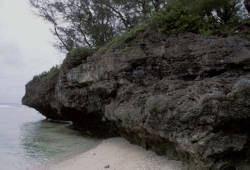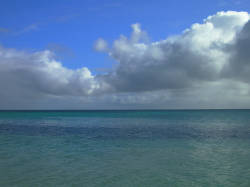Cook Islands - About the Country


The Cook Islands, named after the British discoverer Captain Cook, are a bunch of islands in the middle of nowhere, in the center of the Pacific Ocean. On 240 km² wafer-thin cays and farflung atolls about 20,000 people live, 80% polynesian and some Europeans and mixed. The official languages are Maori and English. The religion is the Cook Islands Christian Church. The government is a self-governing parliamentary democracy, but the head of state is at the moment the British Queen’s Representative Frederick Goodwin. This shows how close the islands still are to Britain.
The islands were originally inhabited by natives. The Polynesians arrived in the 8th century during the great Polynesian migration. In the 11th century the famous chief Toi built the first inland coral road in Rarotonga, called the Ara Metua. In the 13th century the chiefs Karika, from Samoa, and Tangiia Nui, from Tahiti, joined forces at sea to defeat the native inhabitants. In 1770 Captain Cook discovered the islands, which became a British protectorate in 1888. 1900 administrative control was transferred to New Zealand. In 1965 the islands became independent, the residents chose self-government in free association with New Zealand.

© George Szentes, with kind permission.
After an extensive literature and internet search, I have come to the conclusion that the caves of the Cook Islands have been neglected by international cave science. No cave surveys exist and the Cook Islands are not listed in the "Great Caves of the World". However several almanacs and historical notes from the islands deal with the caves from the point view of history and legends. The Lonely Planet series "Rarotonga & the Cook Islands" also mentions and describes the caves. The families who own the caves distribute prospectuses, mainly on the main island of Rarotonga, for tourists and scuba divers, offering caving adventures. This is why some easily accessible underwater sections of the caves have been explored by amateur scuba divers.
(...)
All caves are privately owned by the landowning families. Their permission is necessary to visit the caves. These families are very friendly and cooperative. For a few dollars (the official currency in the Cook Islands is the New Zealand Dollar), a family member will guide you, to and around the caves.
Text from George Szentes (2004): Caves of the Cook Islands, The British Caver Vol. 127 Spring 2005, pp 1-12, 13 color pictures, 1 bw picture, 1 map. With kind permission of the author.
 Search DuckDuckGo for "Cook Islands"
Search DuckDuckGo for "Cook Islands" CIA - The World Factbook -- Cook Islands
CIA - The World Factbook -- Cook Islands Index
Index Topics
Topics Hierarchical
Hierarchical Countries
Countries Maps
Maps